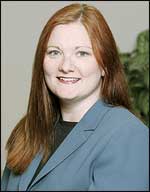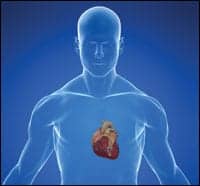
|
As we gear up for the Annual Meeting of the American College of Cardiology this March 24?27 in New Orleans, I thought it important to address the one technology poised to have the greatest impact on the future of radiology and cardiology’s diagnosing of heart disease and, in turn, the cardiac cath lab: CT.
We’ve already seen the changes that 64-slice CT has made on these specialties, with its ability to image the heart and coronary arteries in just 5 seconds, not to mention its ability to find heart disease quicker than ever before. It truly is a dynamic modality that is changing patient care.
Without launching into a full discussion on turf wars, we all know the bottom line: When it comes to matters of the heart, radiology and cardiology need to work together. (This statement reminds me of the not-so-distant past, when the radiology and IT departments had to learn how to play nice for a successful purchase and implementation of PACS.)
North Shore University Hospital (NSUH), Manhasset, NY, has had its 64-slice CT scanner in operation for the past 2 years. The facility—which is highlighted in our cover story “State-of-the-Art Cath Lab“—has found a way to make CT work for both specialties: “It’s a joint project, with both a cardiologist and radiologist reading, and with radiology residents and cardiology fellows being trained side by side,” explains Stephen Green, MD, associate director of the cath lab at NSUH. And guess what? Green says that this system of working together has actually increased diagnostic cath volumes ever so slightly.
Of course, there is no action without a reaction. As CT changes the field and the marketplace, facilities that keep an eye to the future will last. At NSUH, Green has strived to make the cath lab extremely flexible, both to patients and physicians. For example, patients are allowed to schedule procedures on any weekday, and they can even schedule an appointment on the same day that they call. “For physicians, the flexibility is in getting them into a high-tech room 24/7, whenever they need, according to their schedules and the needs of their patients,” Green shares. “We also try to be flexible about device technology and pharmacotherapy, compared to other local centers. Additionally, delineation of privileges for the physicians is such that most have the widest range of privileges at our center compared to their other local hospitals.”
So, here we have a facility with cutting-edge technology and the mindset to accompany it. Patients have access to the latest and greatest in diagnostic equipment, which is important as more and more Americans become seriously involved in their health care and choice of facilities. And physicians—whether they’re radiologists or cardiologists—can use (and train in) the lab to become experts at this advanced technology. It’s a circle that is anything but vicious.
Green notes that the flexibility at NSUH is “not driven by a device, but by leadership, a philosophy, and a program.” Frankly, it’s this type of thinking, paired with the understanding that state-of-the-art technology is a necessity, that will keep any facility around for the long haul—through reimbursement cuts, blending specialties, workflow and infrastructure changes, and technological reformations. What is the way of thinking at your facility? Drop by Medical Imaging’s booth 3168 at ACC, and tell us about it.

Andi Lucas, editor






